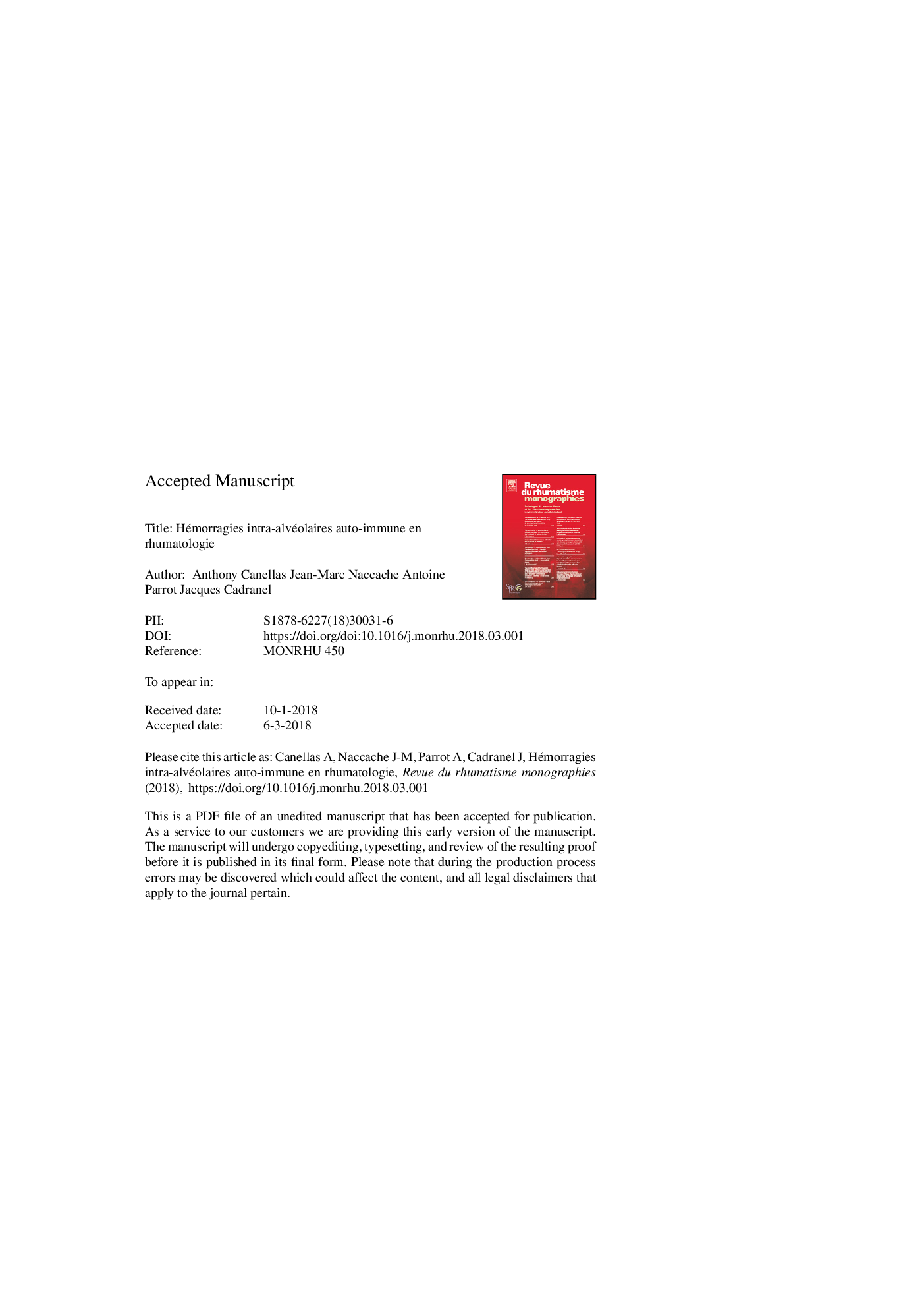| Article ID | Journal | Published Year | Pages | File Type |
|---|---|---|---|---|
| 8743507 | Revue du Rhumatisme Monographies | 2018 | 9 Pages |
Abstract
Alveolar hemorrhage (AH) is a rare and serious disease. Diagnosis is suspected with the three following symptoms: hemoptysis, anemia and radiological infiltrate. It is confirmed by performing a thoracic CT scan and bronchoscopy with bronchoalveolar lavage revealing uniformly hemorrhagic secretions. Etiologies are numerous. They are classically differentiated into “immune” causes (vasculitis related to anti-cytoplasmic neutrophil antibodies (ANCA), connective tissue diseases/systemic lupus erythematous (SLE) and Goodpasture's syndrome) and “non-immune” causes (heart disease, toxic, infectionâ¦). Etiological assessment with the search for extrathoracic clinical signs, dosage of autoantibodies (ANCA, anti-nuclear antibodies and anti-glomerular basement membrane), the realization of a cardiac ultrasound, elimination of a iatrogenic cause or an obvious septic condition is urgent. SLE and antiphopholipid syndrome are the most common immune causes in rheumatology with ANCA-related vasculitis. Other connective tissue diseases are rarely directly involved in the AH mechanism, except in cases of vasculitis-associated forms and the presence of ANCA. In such a situation, a “non-immune” cause must be sought in priority.
Keywords
Related Topics
Health Sciences
Medicine and Dentistry
Immunology, Allergology and Rheumatology
Authors
Anthony Canellas, Jean-Marc Naccache, Antoine Parrot, Jacques Cadranel,
